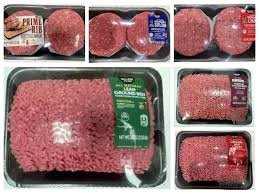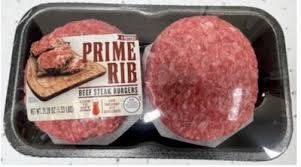1. Recent Major Ground Beef Recalls (2024–2025)
Here’s a timeline of high-impact ground beef recalls and alerts that illustrate both scope and variation:
| Date / Year | Company / Brand | Reason for Recall | Approx Volume / Scope | Notes / Outcome |
|---|---|---|---|---|
| Nov 2024 | Wolverine Packing Co. | E. coli O157:H7 contamination | ~167,277 lbs nationwide | 15 illnesses reported; class I recall. |
| June 2025 | NPC Processing / “Organic Rancher” | E. coli detected in vacuum-packed ground beef | Nationwide alert for 1-lb packages | Public health alert (not full recall) |
| July 2025 | Ada Valley Meat Co. | Possible metal contamination in fully cooked ground beef | ~1,065 lbs | Foreign material risk; recall alert |
| August 2025 | Unknown / frozen ground beef | Metal pieces found in shipments | 1,000+ lbs | Supply chain |
| Various years | Bismillah Halal Meats | E. coli O103 (small retailer alert) | Retail market level | FSIS alert for non-establishment packaging |
| Ongoing / periodic | Lakeside Refrigerated Services | E. coli O103 risk | Several thousand pounds | FSIS recall notice |
These examples show that recalls may stem from microbial contamination (E. coli, Salmonella), or physical hazards (metal, plastic), and can affect both large producers and small retail operations.
2. Why Ground Beef Is Especially Vulnerable
Ground beef presents higher risk than intact cuts because:
- Mixing of carcasses: A batch may combine meat from multiple animals, so contamination in one source can spread widely
- Increased surface area: Grinding exposes interior surfaces to oxygen and microbes
- Cross-contamination risk: In grinders, surfaces and blades can harbor pathogens if not sanitized
- Temperature fluctuations: If cold chain broken, microbial growth accelerates
- Transport/packaging steps: More handling steps increase opportunity for foreign material intrusion
From a 2020 study: ground beef plants that experienced Class I recalls had significantly higher baseline Salmonella in their testing regimes.
3. Types of Contaminants & Pathogens
3.1 Microbial Hazards
- E. coli O157:H7 / other STEC (e.g. O103, O26): Causes hemorrhagic diarrhea, HUS risk in susceptible
- Salmonella spp.: Gastrointestinal illness, more common but usually lower severity
- Listeria monocytogenes, Campylobacter, Shigella (less commonly in beef)
3.2 Physical & Chemical Hazards
- Metal fragments: From machinery wear or broken parts
- Plastic, glass, bone shards: From packaging, cutting, or upstream inputs
- Chemical contamination: Residual detergents, cleaning agents, adulterants
Comparatively, microbial contaminants dominate recall causes in high-impact events, but physical hazards appear more sporadically yet cause strong consumer alarm.
4. Understanding Recall Classes & Processes
Recall / Alert Classes (U.S. FSIS Schema)
- Class I: High risk — consumption may cause serious health consequences or death
- Class II: Moderate risk — temporary or reversible effects
- Class III: Low risk — unlikely to cause adverse health consequences
Recall Lifecycle
- Detection / Test positive (company or regulatory sampling)
- Notification to regulatory body (e.g. FSIS)
- Recall decision / Public alert
- Consumer outreach & instructions
- Product removal / disposal / returns
- Root cause investigation & corrective action
- Post-recall monitoring
In the June 2025 NPC Processing case, no recall was issued because the product was no longer available in commerce — but an alert was published to warn consumers who may possess the items still.
5. What You Should Do If Your Ground Beef Is Recalled
If you find yourself with ground beef in a recall list, follow these steps:
✅ Step-by-Step Consumer Checklist
- Stop consumption immediately
- Check product details: brand, lot codes, establishment number, use-by dates
- Compare to official recall alerts (FSIS site, local regulatory bodies)
- Dispose safely or return as per instruction (seal in plastic, wrap, don’t eat)
- Clean your surfaces, utensils, fridge/freezer
- Monitor your health: watch for symptoms (see Section 5.1)
- Report if symptomatic to your healthcare provider, mention product exposure
5.1 Symptoms & When to Seek Medical Care
- Typical onset: 2–8 days post exposure for E. coli O157:H7
- Symptoms: severe abdominal cramps, bloody diarrhea, vomiting, fever
- Warning signs: decreased urine output, swelling, easy bruising (may suggest HUS)
- Seek immediate care if symptoms worsen or persist > 3 days

5.2 What Retailers / Restaurants Should Do
- Quarantine suspected lots
- Follow recall instructions from regulatory body
- Communicate transparently with customers and public
- Sanitize equipment and retrain staff
- Complete root cause analysis and document changes
6. Prevention at Every Stage
6.1 On the Farm / Cattle Level
- Proper feed, water hygiene, minimizing stress
- Fecal management and hide sanitation
6.2 Slaughter & Processing
- Partition between clean/dirty zones
- Rigor in cleaning and barrier controls
- Metal detector checks, foreign-body audits
- Microbiological sampling program
6.3 Packaging & Transport
- Secure packaging lines, foreign object prevention
- Cold chain control (maintain <4 °C)
- Prevent mechanical damage during transit
6.4 Retail / Butcher Shops
- FIFO stock rotation, lot traceability
- Display temperature control
- Staff training in cross-contamination prevention
7. International Considerations
- Recall regimes differ by country (FDA/USDA in U.S., EFSA in EU, local FSAs)
- Imported ground beef may carry risks from source country regulatory gaps
- Consumers must consult local recall agencies (e.g. in Pakistan: local food authority, import control)
- Language, labeling, and lot traceability systems may complicate cross-border recalls
8. Legal, Regulatory & Industry Implications
- Manufacturers risk litigation and reputational losses
- Regulators may enforce fines, shutdowns, oversight
- Industry shifts: more investment in detection technology (rapid DNA tests, AI vision for foreign object detection)
- Recall insurance is increasingly common
9. Future Trends & Technologies
- Rapid on-site molecular sensors for E. coli / Salmonella
- AI + computer vision detecting metal/plastic during grinding
- Blockchain / lot traceability for instant backtracking
- Better predictive analytics to flag high-risk batches preemptively.




